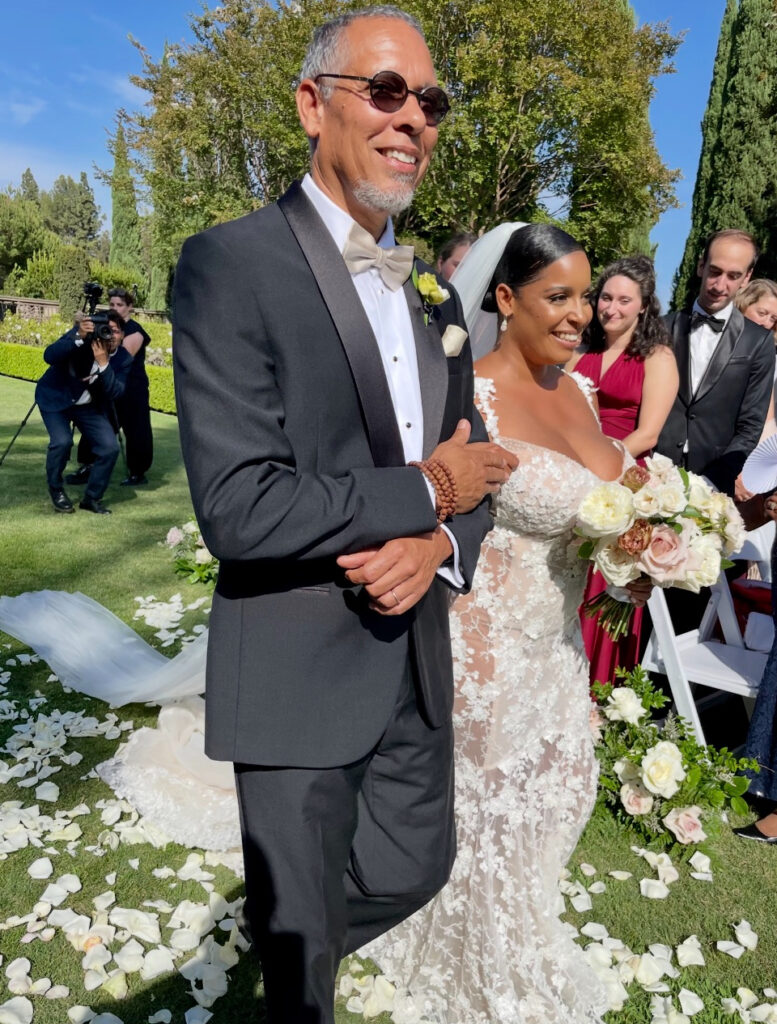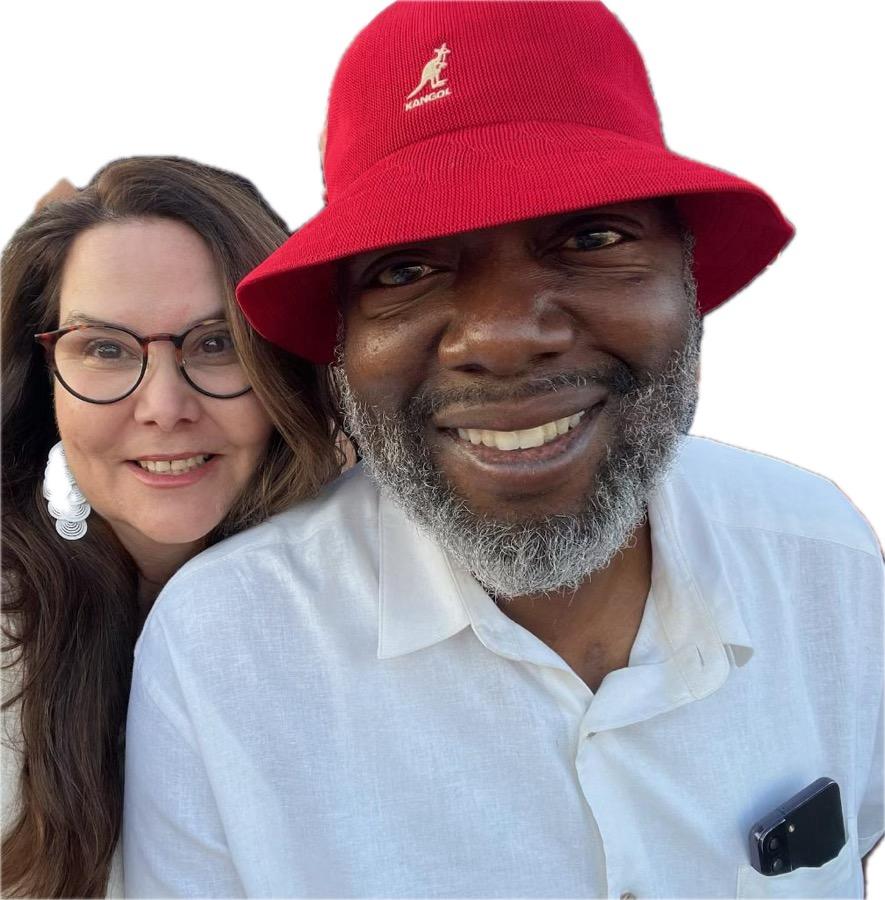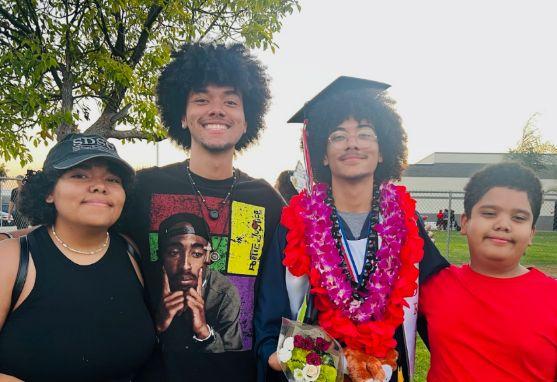By Beatriz Palmer
According to the US Census, in the United States today, nearly 1 in 4 children—17.6 million—live without a biological, step, or adoptive father in the home. The absence of a father figure is more than a personal loss—it’s a social issue with deep and lasting consequences.
Research shows that 90% of all homeless and runaway youth, 85% of youth in prison, 71% of high school dropouts, and 63% of youth suicides come from father-absent homes. These aren’t just statistics—they’re the faces of children in our communities, students in our classrooms, clients in our shelters, and young people in our churches, searching for stability, identity, and love.
This is a call to action! As we talk about the work that needs to be done, we must also recognize those who show up and are present not just for their own, but for others too.
Fatherhood is not just limited to biology. It is defined by presence, among a few other key ingredients; by the choices we make; and by the discipline paired with words of affirmation, culture, and joy. Sometimes that presence comes in the form of a tata, an older brother, a tío, a coach, or a church elder. On this Día del Padre, I want to honor that sacred presence of all of them.

I grew up with a father figure, but one who wasn’t always present—he struggled with addiction to alcohol and drugs, and these struggles often bled into our home life through trauma and domestic violence. But he was also a man who grew up with a lot of pain from poverty and an absent father.
Yet, there was a good side of him, one who loved his children the best way he knew how. He showed love by teaching us what he knew about culture and about being Mexican, through food, música, bailes, and fiestas. He could sing like Vicente Fernández, and when he let out his full-hearted grito: “¡Hay, ja, ja, jai!”, he became Don Chente. He taught me how to dance cumbia, “rock and roll,” and rancheras and how to appreciate music from Ramon Ayala y Los Tigeres del Norte.
At the fiestas, I watched him and my mother dance with such connection that people would stop to admire them. For a moment, that was what love looked like. Real. Fuerte. Joyful–even if it was just for a quick 10 minutes. He was a gifted mechanic. He knew how to break down a car to the last bolt and build it back up again. He worked in agriculture driving a tractor, prepping the lands that would soon be harvested by my mother’s own hands. Before he passed away from cancer, we made peace with his shortcomings. I’ve learned to hold space for both his light and his shadow.
Witnessing the brokenness of fatherhood made me deeply intentional about who I would build a life with. I wanted someone who carried the good parts of my father—the love for music, the heart for his family, and a deep appreciation for food. But mainly I looked for someone who would be present and emotionally grounded. My husband is all of that, and more.
He didn’t grow up with a present father either. Although his father provided financially, emotional support was very scarce. Yet, my husband became a man who chose to heal. He surrounded himself with uncles, church elders, and later, the Marine Corps. He often says: “I don’t just want to provide for my children’s physical, emotional, and spiritual needs—I want to be fully present, so much they’ll never wonder if I loved them.” And he is just that. He’s not only a patient and devoted father to our three children; he’s a joyful, silly, loving grandfather to our grandbabies, whose “I love you’s” are loud and unforgettable. He’s a father figure to my siblings, to our nieces and nephews. He reminds me that mentorship doesn’t end in youth—we all need models, guides, and brothers along the way.

Adrean Askernease, a father of four and an academic counselor at a local community college, grew up surrounded by friends of homes without a father figure. His response wasn’t bitterness—it was a covenant: “I didn’t know who the fathers of most of my friends and family were growing up. I made a commitment to be emotionally, physically, and spiritually available to my children.” For Adrean, fatherhood isn’t about ego—it’s about presence. It’s about showing up even when it’s hard. He described how, at first, he thought his kids needed to be “tough” like he was growing up in the projects. But the birth of his eldest son shifted that worldview. “Like most kids, they just want to be in a loving environment, play sports, do art, and be a kid—without the stress of survival. So, I stopped parenting from trauma and started parenting from love.” He surrounds himself with other men who help him grow: “I ask questions. I stay close to the elders. I don’t do this alone.” And when it comes to legacy? “We are remembered by two things—our name, and what we stood for.”
Greg Snaer, father of three adult children, a human rights activist, and respected community leader, shared his legacy begun generations earlier. His grandfathers, shaped by Jim Crow, communicated love through violence and control. His own father was silent—but not unkind. Then one day, everything changed. “The first time my father hugged me and told me he loved me, it freaked me out. I didn’t know what to do with it. But it changed my trajectory as a man.”
That moment of tenderness taught Greg that real masculinity holds space for emotion. “Masculinity is not about control—it’s about doing the work of love. Real men change diapers, wash dishes, and lead through empathy.” He sees parenting as servant leadership. “We are not authorities over our children. They are people. Our job is to guide them, to give them tools to lead their own lives.” And mentorship? It’s essential. “We must be fathers to all—young and old. That includes your inner child. He needs you too.”

Decades ago, Greg helped lead a coming-of-age ritual for a 15-year-old boy whose family needed help. Drums, sage, prayer—they made it up as they went. But they showed up. And that, Greg says, is what counts most.
These stories remind us that fatherhood is not perfect, but it is powerful. It is an act of resistance, a reclaiming of tenderness, a healing balm in homes and communities where pain has lingered for too long. And when men gather—in faith circles, in schools, in programs like MAAC Head Start’s Fathers in Action—they model something our children desperately need—belonging, and unconditional acceptance. Programs like these create safe spaces for men to reflect, share stories, pass down ancestral joy, and rewrite what fatherhood looks like. As Adrean said: “We don’t have to do this alone.”
Whether you’re a father by blood, marriage, adoption, or presence—gracias. Our children don’t just need providers—they need storytellers. They need hugs and the regular sounds of “te quiero”—I love you. They need someone to shout across the room, “¡Mijo/a, I’m proud of you!” So today, find space, take space, make space. And if you didn’t have a father figure, maybe the path to healing is becoming one—for someone else.
This Día del Padre, let’s do more than celebrate—let’s honor the sacred responsibility of showing up with love. Whether you’re a father, mentor, uncle, coach, or community elder—your role matters.
Our children don’t just need providers—they need listeners, storytellers, and protectors of joy. They need someone to shout, “¡Mijo, I’m proud of you!” and whisper, “Te quiero” when it matters most. Say it forcefully and make it count!
Here’s how to get involved, uplift others, and build legacy
- Reach out to someone who’s been a father figure, mentor, or guide in your life. A simple “Thank you. I see you. I love you.” can carry generations of healing.
- Share a photo, story, or memory using #DíaDelPadreConCariño to honor men who lead with love, faith, quiet strength, or cultural pride.
- Say their name. Tell your children, your students, or your community about the men who shaped you and the lessons they left behind.
- If you didn’t have a father figure, consider becoming one—for your own children, for someone else’s, or for your own inner child.
- Join Dra. Beatriz Villarreal’s Parenting Workshops, offered in English and Spanish, rooted in culture, connection, and family resilience.
- Start a Fathers in Action group at your child’s school, in your neighborhood, at your church, or even right in your living room. You don’t need a title—just heart.
- Check out the Vista Community Clinic Fathers Group—a space for men to reflect, grow, and support one another in community. https://www.vistacommunityclinic.org/6-ways-to-be-a-good-dad-to-be/
- Be a mentor to someone in need. Mentorship can be formal or informal—you get to define what that looks like.
- Write a Legacy Letter to your children or community. What do you want to be remembered for? What wisdom or love do you want to pass on?
- Take time to nurture your own healing. Reparenting yourself is a form of fathering, too—and a powerful act of legacy.




